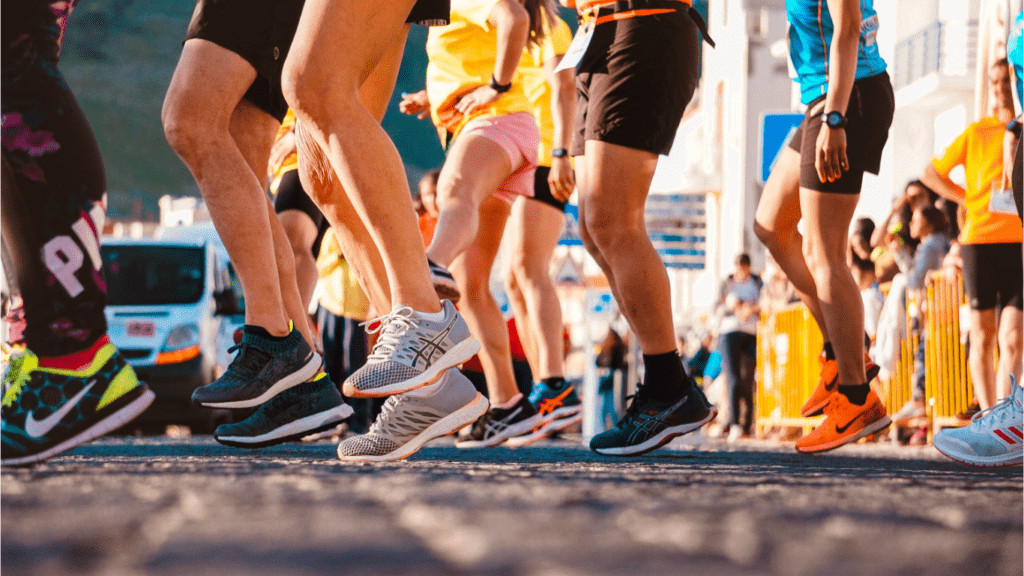Understanding The Basics
Choosing the right sports gear is crucial for performance and safety. This section covers the fundamental items you need across various sports. Always prioritize fitting and material quality.
Footwear
Footwear impacts your performance and health. Running shoes, for instance, offer better cushioning and arch support, which help in running and walking. Cleats are essential for sports like soccer, football, and baseball, providing traction on grass and turf. Basketball shoes offer ankle support and cushioning, reducing the risk of injury during jumps and quick direction changes.
Apparel
Wearing the right apparel ensures comfort and flexibility. For aerobic exercises like running or cycling, moisture-wicking fabrics keep you dry by pulling sweat away from the skin. Compression wear supports muscles and enhances blood flow, which can reduce fatigue and improve performance. Always consider the sport-specific requirements, such as padded shorts for cycling or breathable fabrics for tennis.
Protective Gear
Protective gear minimizes the risk of injuries. Helmets are essential for sports like cycling, football, and hockey, protecting the head from impact. Mouthguards reduce the risk of dental injuries in contact sports like boxing or basketball. Shin guards are crucial for soccer, shielding the lower legs from kicks and impacts.
Accessories
Accessories enhance convenience and safety. A good-quality sports bag keeps your gear organized and transported easily. For hydration, insulated water bottles maintain the temperature of your liquids, which is beneficial for outdoor sports and long workouts. Fitness trackers monitor your performance, offering data on heart rate, calories burned, and exercise duration.
Understanding these basics helps you make informed decisions about sports gear, ensuring that you start your sporting journey on the right foot.
Essential Gear For Different Sports
Choosing the right gear can significantly improve performance and safety in any sport. Here’s a look at the essential gear for running, cycling, and swimming.
Running
Running requires minimal equipment, but quality matters. Choose the right pair of running shoes to prevent injuries and enhance comfort. Shoes should match your foot type and running style. Clothing made from moisture-wicking fabric keeps you dry and comfortable. A water bottle or hydration belt ensures you stay hydrated. A fitness tracker can help monitor distance and progress.
Cycling
Cycling gear focuses on safety and efficiency. A properly fitted helmet is crucial for head protection. Cycling shorts with padding enhance comfort during long rides. A durable bike lock provides security. High-visibility clothing and reflective gear improve safety, especially for night rides. Efficient lighting with a bright front light and a blinking rear light is essential. A multi-tool ensures you can make basic repairs on the go.
Swimming
Swimming gear should prioritize comfort and functionality. A well-fitted swimsuit minimizes drag and enhances performance. Swim goggles protect your eyes from chlorine and help you see clearly underwater. A swim cap reduces water resistance and keeps hair out of your face. Swim fins and a kickboard aid in training and technique improvement. Consider a waterproof fitness tracker to monitor swimming metrics.
These basics guarantee a good start in running, cycling, or swimming by focusing on performance, safety, and comfort.
Choosing The Right Apparel
Selecting the right apparel is crucial for comfort and performance in any sport. I’ll detail essential considerations for footwear, clothing, and accessories.
Footwear
Proper footwear supports performance and reduces injury risk. Opt for sport-specific shoes, such as:
- Running Shoes: Engineered for distance, available in neutral, stability, and motion control types tailored to individual running styles and foot mechanics.
- Cleats: Necessary for traction on grass and turf fields, with variations for sports like soccer, football, and baseball.
- Court Shoes: Designed for basketball, tennis, and volleyball, offering lateral support and cushioning to handle quick movements.
Clothing
Appropriate clothing enhances comfort and efficiency. Look for:
- Moisture-Wicking Fabrics: Keep sweat away from the skin, ideal for keeping cool during intense activities.
- Compression Apparel: Supports muscles and aids in recovery, found in tops, shorts, and tights.
- Layering Options: Adapt to different weather conditions, with light, breathable layers for warmth without overheating.
Accessories
Accessories can improve safety and convenience. Essential items include:
- Helmets: Critical for cycling, skiing, and contact sports, providing protection against head injuries.
- Fitness Trackers: Monitor physical activity, heart rate, and other metrics, great for tracking performance and progress.
- Hydration Gear: Vital for maintaining hydration, options include water bottles, hydration packs, and belt systems.
Each of these apparel elements plays a key role in ensuring you’re well-equipped and comfortable as you start your sporting journey.
Safety Equipment

Choosing the right safety equipment is crucial for injury prevention in sports. This section covers essential safety gear needed across various activities.
Helmets
Helmets protect the head from impacts in sports like cycling, football, and skateboarding. Look for helmets certified by regulatory bodies like the Consumer Product Safety Commission (CPSC) in the US to ensure they meet safety standards. A proper fit is vital: measure your head circumference and adjust the straps to secure the helmet snugly. For example, in biking, select a helmet with adequate ventilation and a retention system for comfort during rides.
Pads And Guards
Pads and guards shield vulnerable body parts in high-contact and action sports. Types of pads and guards include:
- Knee Pads: Essential for activities like skateboarding and volleyball. Ensure they have sufficient padding and stay in place during movement.
- Elbow Guards: Crucial for sports such as hockey and mountain biking. Look for durable outer shells and comfortable inner padding.
- Shin Guards: Used in soccer and martial arts. Choose shin guards with a hard outer layer and cushioning to absorb impacts.
- Chest Protectors: Common in baseball and motocross. Opt for well-ventilated and adjustable designs for better mobility and comfort.
Properly fitting pads and guards can significantly reduce the risk of fractures, cuts, and bruises in any sport.
Tips For Beginners
Getting into a new sport requires some planning, especially as a beginner. Here are key tips to help you navigate the initial stages of your sporting journey:
Research Your Sport
Understanding the nuances of your chosen sport helps in making informed decisions regarding gear and training. Check out official guidelines and professional advice.
Invest In Quality Gear
Quality gear ensures safety and enhances performance. For example, running shoes with good arch support or a helmet with proper certification offer better protection and durability.
Start Slow
Gradually increase the intensity of your workouts to avoid injuries and build endurance. Short runs or beginner-level drills work well in the initial stages.
Learn Proper Technique
Correct techniques reduce the risk of injuries and improve efficiency. Watching tutorials or joining classes can help in mastering basic skills.
Stay Hydrated
Hydration plays a critical role in maintaining performance levels. Always keep a water bottle handy and ensure you meet your daily fluid intake needs.
Listen To Your Body
Recognize the signs of fatigue or discomfort, and don’t push through pain. Rest days are essential for muscle recovery and overall well-being.
Set Realistic Goals
Begin with achievable goals to stay motivated. Completing a 5K run or mastering a basic drill can provide a sense of accomplishment and readiness for more advanced challenges.
Seek Professional Guidance
Consulting a coach or a professional can provide personalized tips and training routines. They can correct your form, offer feedback, and ensure you’re on the right path.
Join A Community
Participating in group activities or joining clubs can create a support network. It can offer encouragement, make the sport more enjoyable, and provide learning opportunities from peers.
Track Your Progress
Using fitness trackers or even a simple journal to log your progress helps in identifying areas for improvement. Tracking metrics like time spent, distances covered, or techniques mastered can offer tangible proof of your advancement.


 Patience Degarmonic was instrumental in building the community and health sections of News Flip Network, bringing a fresh perspective to the platform. Her focus on wellness content, along with her efforts in curating relevant and insightful articles, added depth to the site’s offerings. Degarmonic’s contributions ensured that readers not only stay informed about current events but also gain valuable tips for leading balanced and healthy lives.
Patience Degarmonic was instrumental in building the community and health sections of News Flip Network, bringing a fresh perspective to the platform. Her focus on wellness content, along with her efforts in curating relevant and insightful articles, added depth to the site’s offerings. Degarmonic’s contributions ensured that readers not only stay informed about current events but also gain valuable tips for leading balanced and healthy lives.